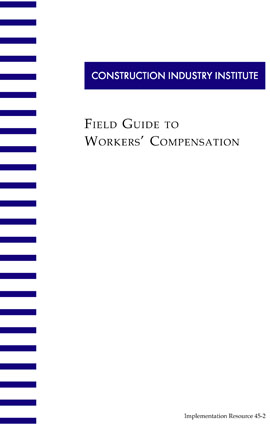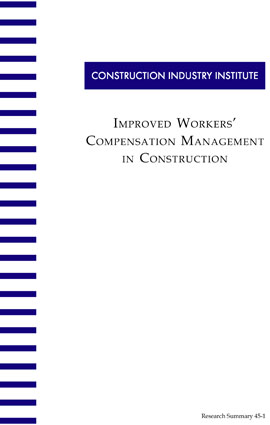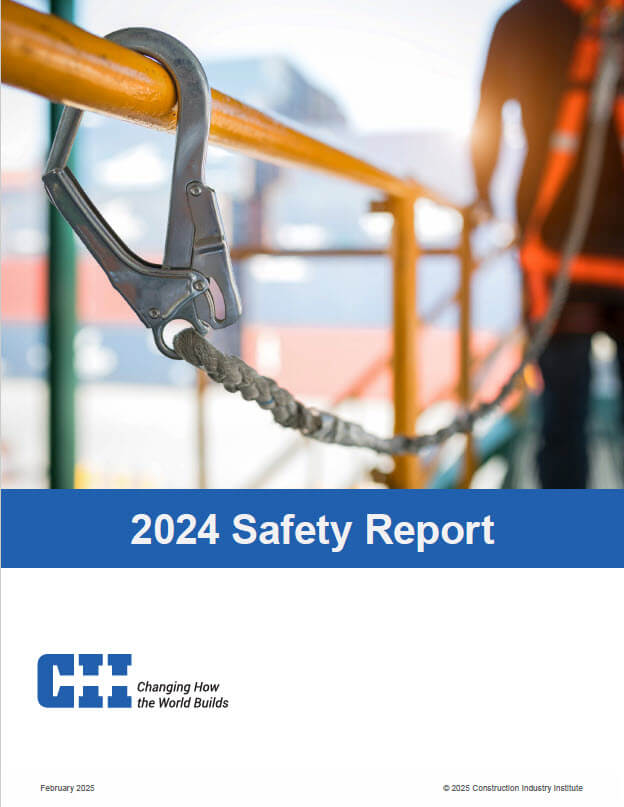
Improved Workers' Compensation Management in Construction
Workers’ compensation is one of the most pressing problems in the construction industry today. Each of the fifty states has a workers’ compensation law; however, there are wide differences in the costs, benefits and administration of these laws between the states. To compound the problem, many owners who require the services of a contractor or subcontractors are using the Experience Modification Rate (EMR), an insurance industry factor used to adjust manual workers’ compensation premiums based on an insured’s past loss history, to evaluate a contractor s safety performance and to deny them an opportunity to bid on and get much needed work.
Clearly, there is a need to reduce the cost of workers’ compensation for contractors while delivering appropriate benefits to injured employees. There is also a clear need for developing and instituting a more equitable method for evaluating the safety performance of contractors. To accomplish this goal, the research team felt a review of the construction industry was needed to identify best practices and to use these practices in formulating guidelines for improved workers’ compensation management and contractor evaluation. All participants in the construction industry (employees, owners and contractors) stand to benefit from any improvements.
Objectives
The objectives of the research study were:
- Identify key elements of effective workers’ compensation management and associated impacts on project costs.
- Examine the validity of use of the EMR as an indicator of contractor safety performance and identify other effective measures.
- Develop guidelines for improved workers’ compensation management in construction and develop other effective measures of contractor safety performance besides the EMR.
Research Findings, Recommendations and Potential Benefits
The research team presents several findings of its research efforts plus offers several recommendations on both workers’ compensation management practices and the use of the EMR and other measures for evaluating a contractor’s safety performance. Some of the key findings and recommendations are noted here; full details are available in Chapter 7 of this research report.
Research Findings:
- Many contractors surveyed feel that they adequately educate employees about workers’ compensation; however, many employees surveyed do not understand.
- Many contractors do not take an active role in workers compensation management practices, especially with respect to insurers, medical providers and injured employees.
- Many contractors treat workers compensation costs as overhead and do not directly assign the responsibility, accountability or allocation of the costs to specific managers, supervisors or projects.
- Owners place too much emphasis on the EMR as a measure of contractor safety performance and as a sole indicator in the contractor selection process.
- OSHA incidence rates for companies who do not track safety results by project are twice the rates of companies who do, i.e. What gets measured, gets improved.
Recommendations on Workers’ Compensation Management:
- Contractors should educate employees, employers and employee representatives about workers compensation and its impact on business.
- Contractors should take an active role in interfacing with their insurance carrier and medical health providers for projects.
- Contractors should maintain frequent contact with injured employees. Make sure their needs and expectations are being met and keep them abreast of jobsite activities.
- Contractors should utilize modified work programs for injured employees where they can perform productive duties without exposing them or their co-workers to further injury.
- Contractors should establish accountability for workers compensation costs with projects and supervisors.



